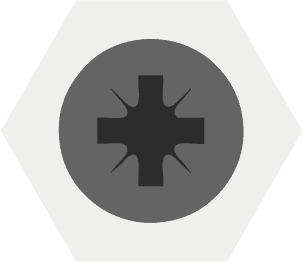Head Style or Drive Style? Don’t Lose Your Head With Our eBook
You are probably familiar with a number of screw and driver styles, but you may not be aware that hundreds of different drives in all shapes and sizes have been developed over the years. From slotted drives to hexagonal recessed drives, there are a wide variety of head and drive combinations for both everyday use and specialized applications.
APM Hexseal has consulted with our in-house hardware specialists to compile a comprehensive collection of information on screw head and drive designs in our latest eBook. With this resource, you can better understand the characteristics that differentiate screws and drives, as well as the best applications in which to use them.
Below you’ll find a short preview of the most common drives described in our in-depth eBook analysis.



 Slotted Drive
Slotted Drive Robertson Drive
Robertson Drive The Philips Drive
The Philips Drive Pozidriv Drive
Pozidriv Drive Six-Lobe Drive
Six-Lobe Drive Hex Recess Drive
Hex Recess Drive External Hex Drive
External Hex Drive